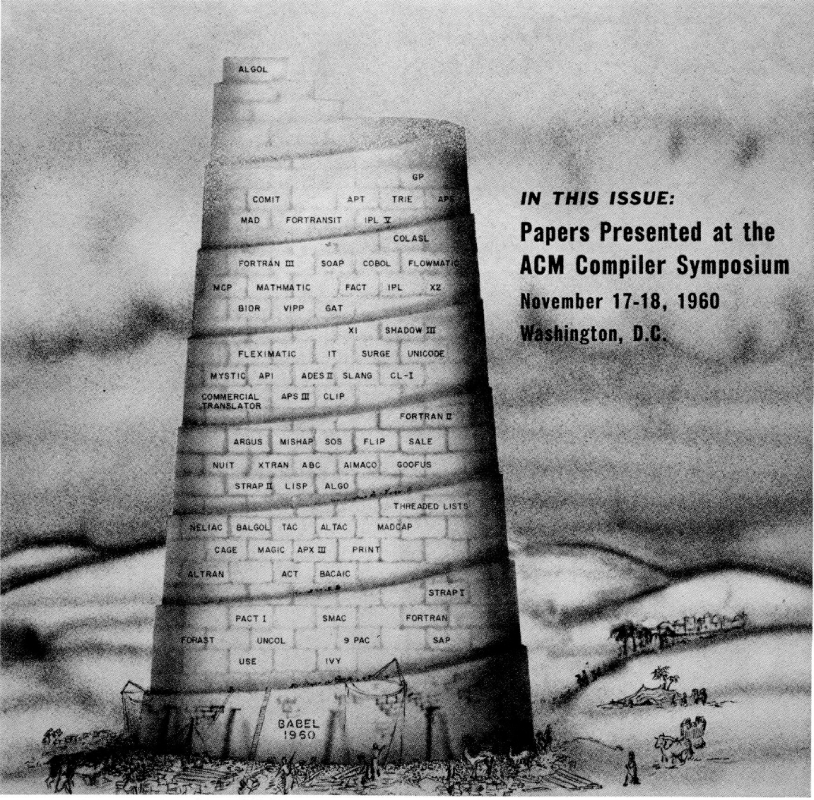IVY(ID:3093/ivy001)
References:

in [ACM] CACM 4(01) (Jan 1961) view details
An important step in artificial language development centered around the
idea that i t is desirable to be able to exchange computer programs between
different computer labs or at least between programmers on a universal level.
In 1958, after much work, a committee representing an active European computer
organization, GAMM, and a United States computer organization, ACNI,
published a report (updated two years later) on an algebraic language called
ALGOL. The language was designed to be a vehicle for expressing the processes
of scientific and engineering calculations of numerical analysis. Equal stress was
placed on man-to-man and man-to-machine communication. It attempts to
specify a language which included those features of algebraic languages on
which it was reasonable to expect a wide range of agreement, and to obtain a
language that is technically sound. In this respect, ALGOL Set an important
precedent in language definition by presenting a rigorous definition of its syntax.
ALGOL compilers have also been written for many different computers.
It is very popular among university and mathematically oriented computer
people especially in Western Europe. For some time in the United States, it will
remain second to FORTRAN, with FORTRAN becoming more and more like
ALGOL.
The largest user of data-processing equipment is the United States Government.
Prodded in Part by a recognition of the tremendous programming investment
and in part by the suggestion that a common language would result only
if an active Sponsor supported it, the Defense Department brought together
representatives of the major manufacturers and Users of data-processing equipment
to discuss the problems associated with the lack of standard programming
languages in the data processing area. This was the start of the conference on
Data Systems Languages that went on to produce COBOL, the common business-
oriented language. COBOL is a subset of normal English suitable for expressing
the solution to business data processing problems. The language is
now implemented in various forms on every commercial computer.
In addition to popular languages like FORTRAN and ALGOL, we have
some languages used perhaps by only one computing group such as FLOCO,
IVY, MADCAP and COLASL; languages intended for student problems, a
sophisticated one like MAD, others like BALGOL, CORC, PUFFT and various
versions of university implemented ALGOL compilers; business languages in addition
to COBOL like FACT, COMTRAN and UNICODE; assembly (machine)
languages for every computer such as FAP, TAC, USE, COMPASS; languages to simplify problem solving in "artificial intelligence," such as the so-called list
processing languages IPL V, LISP 1.5, SLIP and a more recent one NU SPEAK;
string manipulation languages to simplify the manipulation of symbols rather
than numeric data like COMIT, SHADOW and SNOBOL; languages for
command and control problems like JOVIAL and NELIAC; languages to simplify
doing symbolic algebra by computer such as ALPAK and FORMAC;
a proposed new programming language tentatively titled NPL; and many,
many, more. A veritable tower of BABEL!
in [ACM] CACM 4(01) (Jan 1961) view details
in [ACM] CACM 15(06) (June 1972) view details